American Indian Resources

Educator Resources
This page serves as a dynamic link to resources about the unique cultures, diverse history, contributions and resilience of the Native Americans in Utah and throughout North America.
Learning Resources ![]() Lesson Plans
Lesson Plans ![]() Professional Development
Professional Development ![]() General Information
General Information ![]() Frequently Asked Questions
Frequently Asked Questions
 Learning Resources
Learning Resources
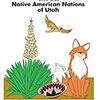 The Native American Indian Literacy Project
The Native American Indian Literacy ProjectThis project included a series of books and lesson plans that were created with the help of tribal elders and cultural consultants and are based on the oral traditional stories and history of their specific tribes.
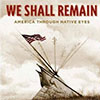 We Shall Remain
We Shall RemainThis multimedia project from the award-winning PBS series American Experience presents Native history as an essential part of American history.
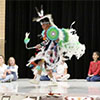 Native American Curriculum Initiative
Native American Curriculum Initiative Discover a collection of authentic, accurate and relevant resources for enhancing classroom learning through the arts. Resources include cultural arts, tribal approved lesson plans, opportunities to invite contemporary artists for classroom visits, culturally responsive book recommendations and more.
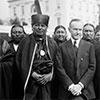 Indian Citizenship Act June 2, 1924
Indian Citizenship Act June 2, 1924The American Indian Citizenship Act of 1924, also known as the Snyder Act, granted U.S. citizenship to all Native Americans born within the territorial boundaries of the United States. Prior to the act, Native Americans were not considered citizens and were instead treated as wards of the federal government.
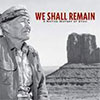 A Native History of Utah: We Shall Remain
A Native History of Utah: We Shall Remain Each episode in this five-part series features one of the five indigenous tribes of the Great Basin Region we now call Utah. View the We Shall Remain lessons.
 The Utah American Indian Digital Archive: Utah’s Tribes
The Utah American Indian Digital Archive: Utah’s TribesWith articles, books, government documents, oral histories, photographs and maps pertaining to the Northwest Shoshone, Goshute, Paiute, Utah Navajo, White Mesa and Ute Indian tribes, this unique archive captures the complicated history of Utah’s tribes from multiple perspectives.
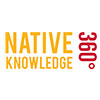 Native Knowledge 360: Essential Understandings
Native Knowledge 360: Essential UnderstandingsExplore the framework and foundational concepts that build on the ten themes of the National Council for the Social Studies’ national curriculum standards for teaching about Indigenous peoples in a historically based, respectful way. From the Smithsonian National Museum of the American Indian.
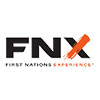 UEN/FNX TV
UEN/FNX TV First Nations Experience channel presents Native American stories and content to create a 24/7 channel with a wide array of content for all media platforms.
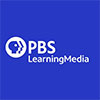 PBS Learning Media
PBS Learning MediaFree, standards-aligned videos, interactives, lesson plans and more. There are thousands of resources available when you search for American Indian.
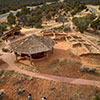 CyArk/Bears Ears National Monument 3D Guided Tour
CyArk/Bears Ears National Monument 3D Guided TourExplore Mule Canyon Village and House on Fire in 3D guided tours of Bears Ears National Monument and learn about the history of the Ancestral Pueblo people and the significance of the landscape to descendant communities today.
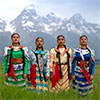 Art heals: The Jingle Dress Project
Art heals: The Jingle Dress ProjectThe Jingle Dress Project originated from artist Eugene Tapahe’s dream to unite the beauty of the land and the healing power of the jingle dance.
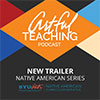 Artful Teaching Podcast
Artful Teaching PodcastThe "Native American" series of the "Artful Teaching" podcast focuses on providing teachers with culturally sensitive content to use in the classroom.
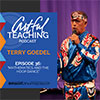 Native American Curriculum Initiative - Video Playlist
Native American Curriculum Initiative - Video PlaylistView all the companion videos that go along with the "Native American" Series of the "Artful Teaching" Podcast and other videos that support the NACI.
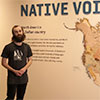 Native Voices Virtual Field Trip
Native Voices Virtual Field TripThe Indian Advisory Committee advises the Natural History Museum of Utah on a broad range of issues affecting the use, care, study and interpretation of Native American collections.
 First Peoples Virtual Field Trip
First Peoples Virtual Field TripDiscover how the physical geology of Utah influenced hunting and gathering techniques and examine food preparation tools and artifacts.
 First Native American Woman in Space
First Native American Woman in SpaceNicole Aunapu Mann made history as the first Native woman to fly into space fall 2022.
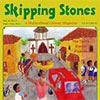 Skipping Stones
Skipping StonesSkipping Stones is a nonprofit children's literary magazine that encourages cooperation, creativity and celebration of cultural and linguistic diversity.
 3 Poems and Classroom Activities to Teach Joy Harjo, National Poet Laureate
3 Poems and Classroom Activities to Teach Joy Harjo, National Poet LaureateGet started teaching lessons based on the work of Joy Harjo, one of the United States' great living poets.
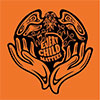 Orange Shirt Day
Orange Shirt DayOrange Shirt Day is a time to reflect on the history and ongoing impacts of the residential school system in Canada and Indian Boarding School system in the United States.
 Lesson Plans
Lesson Plans
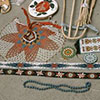 5 Tribal Groups, 8 Sovereign Nations
5 Tribal Groups, 8 Sovereign NationsExplore movement concepts connected to learning about and from the five tribal groups, and more specifically the eight sovereign nations located in Utah. This lesson from the BYU ARTS partnership goes well with the video Utah's Eight Tribal Nations.
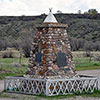 Bear River Massacre
Bear River Massacre
Engage students in primary source analysis through activities by historian and BYU professor Dr. Jeffrey D. Nokes.
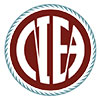 National Indian Education Association
National Indian Education AssociationFind digital education tools, lesson plans, and resources for grades PreK-2, grades 3-5 and grades 6-12.
 Native American Curriculum Initiative - Lesson Plans
Native American Curriculum Initiative - Lesson PlansDiscover a collection of authentic, accurate and relevant lesson plans that support teachers and children in the learning and teaching of Native American cultural arts.
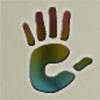 We Shall Remain: Utah Indian Curriculum Project
We Shall Remain: Utah Indian Curriculum Project These teaching guides and lesson plans are suitable for grades 4-12 and may be used either alone or with We Shall Remain videos for Utah Studies, US History, Government, Geography and similar courses.
 Native Knowledge 360: Educational Resources
Native Knowledge 360: Educational ResourcesExplore featured instructional and informational resources or use the search tool to find more educational materials from the Smithsonian National Museum of the American Indian.
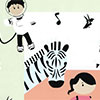 Fall in Line, Holden!: Dance and Creative Movement
Fall in Line, Holden!: Dance and Creative MovementEngage students through movement and dance with a lesson based on the book “Fall in Line, Holden!”
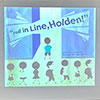 Fall in Line, Holden!: Creative Vocal Play
Fall in Line, Holden!: Creative Vocal PlayThis lesson is centered around the book “Fall in Line, Holden!” written by Daniel Vandever, a Diné/Navajo author. Vandever states in his author’s note that the book was written with the intention of promoting creative thinking and originality.
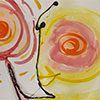 Walk the Line
Walk the LineUsing the books “Fall in Line, Holden!” and/or “When We Were Alone,” students will create a collaborative visual art piece.
 When We Were Alone: Every Child Matters
When We Were Alone: Every Child MattersGently explore the history and experiences of Native American children who attended boarding school.
 Professional Development
Professional Development
 Native Knowledge 360: Professional Development Opportunities for Teachers
Native Knowledge 360: Professional Development Opportunities for Teachers These live and interactive programs introduce educators to NK360° and its extensive resources. From the Smithsonian National Museum of the American Indian.
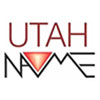 Utah NAME
Utah NAMEUtah NAME is to promote and support education that is multicultural as a means of achieving full academic potential of every learner in Utah.
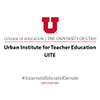 Urban Institute For Teacher Education
Urban Institute For Teacher EducationThe mission of the UITE is to prepare educators to serve urban students and educational communities from all backgrounds.
 Educators are working to bring Indigenous perspectives into classrooms
Educators are working to bring Indigenous perspectives into classroomsTwo educators share how they approach teaching about the significance of Indigenous People's Day but they also offer good advise for any classroom no matter what day it is.
Join hosts Dani and Matt in this episode of UEN Homeroom as they welcome guests Anisha Marion and Leonard Almero from the American Indian Resource Center to discuss ways educators can support Native American learners in K-12 classrooms.
On this episode of UEN Homeroom, Matt and Dani get the pleasure of speaking with "This Land" podcast host and activist, Rebecca Nagle about Native American culture and education. Their conversation covers storytelling, uplifting marginalized voices and how educators can learn more about Native American culture.
In this episode, Dani and Matt are joined by Heather Francis and Brenda Beyal from the BYU Arts Partnership's Native American Curriculum Initiative. They talk about the initiative, why it exists, how they built the curriculum and how it will help educators.
 General Information
General Information
 USBE: Title VI American Indian Education
USBE: Title VI American Indian EducationFind and apply for grants, loans and work-study funds for college or career school.
 Native Knowledge 360: Educator Resources
Native Knowledge 360: Educator Resources Native Knowledge 360 provides educators and students with new perspectives on Native American history and cultures. From the Smithsonian National Museum of the American Indian.
 We Shall Remain: Utah Indian Curriculum Project
We Shall Remain: Utah Indian Curriculum Project These teaching guides and lesson plans are suitable for teaching the history, culture and current issues of American Indian tribes located in Utah to students grades 4, 7 and 9-12.
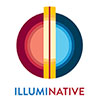 IllumiNative
IllumiNativeChallenge stereotypes with authentic, contemporary information by and about Native peoples from an initiative designed to increase the visibility of Native people in American society.
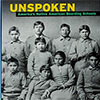 Unspoken: America's Native American Boarding School
Unspoken: America's Native American Boarding SchoolBreak the silence around the history of American Indian boarding schools and how they impacted the lives of Native children, families and communities by aiming to eradicate Indigenous languages and culture.
 Frequently Asked Questions
Frequently Asked Questions
Check out the answers to some of the questions that educators frequently ask about Native Americans.
 Thanksgiving
ThanksgivingHow is Thanksgiving experienced from a Native person’s perspective?
 Columbus Day or Indigenous Peoples' Day
Columbus Day or Indigenous Peoples' DayDoes Utah recognize and celebrate Columbus Day or Indigenous Peoples' Day?
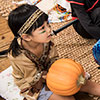 Dressing Up and Costume
Dressing Up and CostumeShould I discourage dressing up as a Native American in my classroom?
 Mascots
MascotsWhere does Utah stand on Indigenous mascots?


 UTAH EDUCATION NETWORK
UTAH EDUCATION NETWORK

 Justin
Justin Braxton
Braxton Dani
Dani Rob
Rob Val
Val
